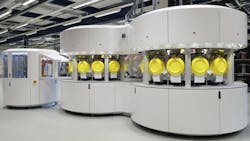Thin-film CIGS photovoltaics maker Midsummer doubles revenue and profits in 2017
Midsummer (Stockholm, Sweden), which makes copper indium gallium selenide (CIGS) thin-film photovoltaic solar panels and manufacturing systems, says that in 2017 its revenues nearly doubled and profits more than doubled. The company ascribes the good fortune to several new orders for the company's DUO thin-film solar cell manufacturing systems and a successful launch of Midsummer’s building integrated photovoltaics (BIPV) metal roof systems concept.
Midsummer's revenues for 2017 increased by 94% compared with 2016, up from SEK 59m to SEK 115m (USD 14m; EUR 11.3m). Annual profits before taxes increased by 135%, from SEK 10.4m to SEK 24.5m (USD 3m; EUR 2.5m). The operating margin was 21.7% and the solidity was 36.3%. The company notes that this performance came after a similar jump in revenues and profits from 2015 to 2016.
"We see a continued high demand for our products and the order outlook for 2018 is very promising, both for DUO manufacturing systems and for deliveries of solar panels," says Midsummer’s CEO Sven Lindström. "We expect to double the number of employees in 2018."
The DUO system is the most widely used manufacturing tool for flexible CIGS solar cells in the world, according to Midsummer, which also notes that it is at the moment the only company in the world to offer light, flexible, robust solar panels with a high energy efficiency. Last year, Midsummer established a production partnership with the Swedish roof manufacturer Clix for the launch of Clixsun, a roofing system with integrated solar panels, adding a second business area to Midsummer's roster.
For more info, see midsummer.se.
Source: Midsummer

John Wallace | Senior Technical Editor (1998-2022)
John Wallace was with Laser Focus World for nearly 25 years, retiring in late June 2022. He obtained a bachelor's degree in mechanical engineering and physics at Rutgers University and a master's in optical engineering at the University of Rochester. Before becoming an editor, John worked as an engineer at RCA, Exxon, Eastman Kodak, and GCA Corporation.
